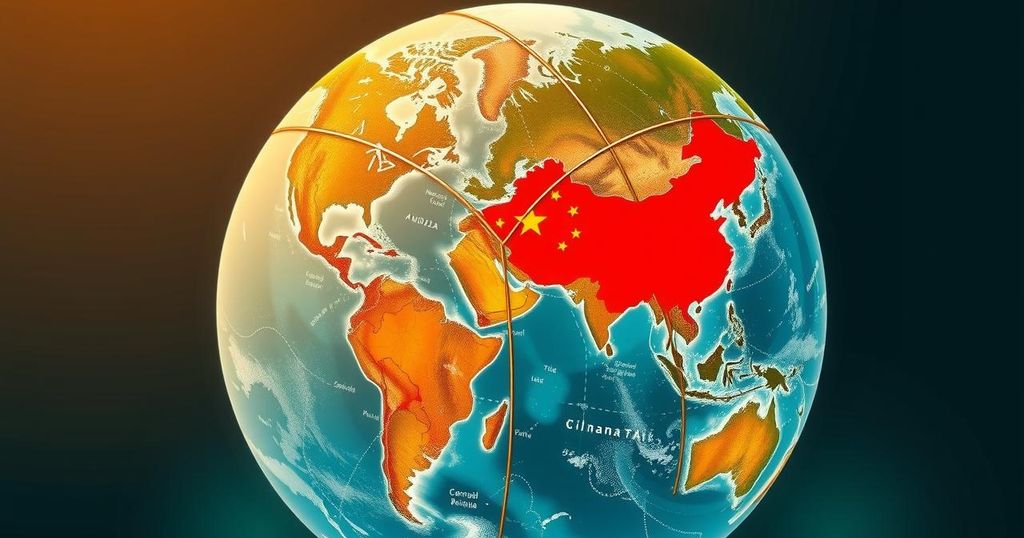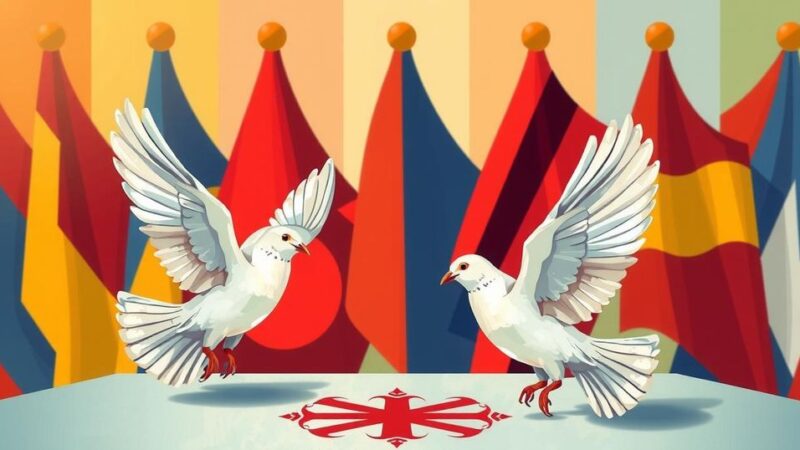Colombia has officially joined China’s Belt and Road Initiative, marking a shift in geopolitical alignments under President Gustavo Petro. The memorandum signed promotes cooperation in areas like trade and infrastructure, but lacks binding commitments. Tensions with the U.S., particularly under Trump, complicate these developments, raising concerns among Colombian businesses about potential backlash, while supporters argue it could lead to beneficial trade opportunities.
Colombia has taken a significant step by joining China’s Belt and Road Initiative, known as the New Silk Road, as President Gustavo Petro formalized the entry this past Wednesday. This geoeconomic project now boasts participation from over 140 countries. The memorandum of understanding promotes enhanced cooperation in various sectors, notably infrastructure and trade, raising eyebrows back in the U.S. since Colombia has long been viewed as a close ally of Washington.
The warm gesture from Colombia is seen in light of an apparent cooling relationship between Bogotá and Washington, especially under President Donald Trump. Just earlier this year, tensions flared when Trump threatened to levy high tariffs and alter visa policies in response to disputes on deportations. Amid this backdrop, Petro’s recent trip to China signals a pivot toward Beijing, with 21 countries previously aligning with the Belt and Road Initiative in the region.
While speaking to supporters in Bogotá on May 6, Petro emphasized his intentions to deepen ties with China, stating, “I am not in a trade competition with China or the United States. Colombia will be won by whoever makes the best offer during the bidding process.” This sentiment underscores a shift in strategy as Colombia seeks to diversify partnerships beyond traditional allies.
However, the memorandum signed lacks any specific funding commitments or project outlines, focusing more on potential areas for collaboration without any immediate obligations enforcing it. This non-binding nature allows future Colombian administrations to reassess membership in the initiative. Analysts suggest this is more of a political statement than an economic strategy, with Sergio Gúzman from Colombia Risk Analysis expressing that Petro’s actions directly counter Trump’s efforts to consolidate U.S. influence in Latin America.
Addressing the questions of preferential treatment and U.S. involvement, Petro defended Colombia’s right to engage with China, rhetorically questioning, “What harm has China done to us?” He was alluding to historical grievances like Panama’s separation from Colombia, influenced significantly by U.S. actions. This assertion opens up a broader discussion on sovereignty and foreign engagement.
Yet, there’s apprehension among Colombian business leaders regarding potential U.S. backlash. Javier Díaz Molina, head of the National Association of Foreign Trade, noted the U.S. has been increasing pressure on regional partners for favorable ties and expressed concern over short-term retaliations.
Despite Trump’s tariffs on Colombian exports such as petroleum and coffee, there remains a desire among entrepreneurs to reinforce economic relationships with the U.S. Many fear that China might not adequately fill the gap as a reliable export market. María Claudia Lacouture, president of the Colombian-American Chamber of Commerce, cautioned that while Colombia can pursue new trade avenues, “these must generate concrete benefits.”
Current trading dynamics show Colombia imports a similar volume of goods from both China and the U.S., yet the export figures tilt heavily towards the U.S., revealing a $13.5 billion trade deficit with China last year. Lacouture emphasized that the relationship with the U.S. is not only more stable but decidedly reciprocal compared to the experience with Chinese investments.
The Belt and Road Initiative has already led to considerable investments in key infrastructure across Latin America, including countries like Peru, Chile, and Argentina. However, critics warn that such deals could lock poorer nations in debt while further harming labor and environmental standards, arguing that the terms are often comparable to those offered by international financial institutions like the IMF. This ongoing debate continues as Colombia navigates its new relationship with China.
In conclusion, Colombia’s entry into China’s Belt and Road Initiative signifies a notable geopolitical shift, challenging traditional ties with the U.S. while seeking new economic opportunities. President Gustavo Petro’s actions reflect a broader aspiration for sovereignty in foreign relations, albeit amid concerns of potential repercussions from Washington. As the nation explores these new partnerships, the implications for trade dynamics and regional influence will be crucial moving forward. The tension between aligning with China and maintaining a strong relationship with the U.S. remains a pivotal theme in Colombia’s strategic decisions.
Original Source: www.miamiherald.com






